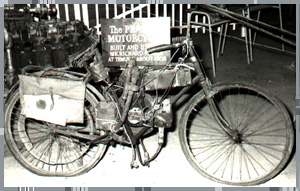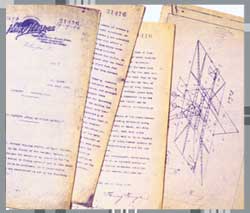
His motorbike

Patents he took out
Pearse was disappointed to hear of the Wright Brothers' successful flights, but he continued his flying experiments, achieving several further powered take-offs, or long hops. Most of them were witnessed, none of them significantly furthering his ambitions towards sustained flight though. He patented his aircraft in July 1906.
After five years, he realized that he could not keep up with what was happening overseas, because he was too short of money and resources to achieve similar results. He later wrote, "I decided to give up the struggle, as it was useless to try to compete against the men who had factories at their backs."
He continued to invent other things, such as gramophones, and a variety of ingenious pieces of farm equipment, including a motorised plough, a fertiliser applicator and an automatic potato planter with mechanical arms fixed to a plough. He used to drive around in a motorcycle he had made himself. It was incredibly noisy, and shot sparks from the exhaust pipe.
In the early 1930s he set about designing and building a second aircraft: his "Utility Plane". Built with an engine that could be changed in pitch so that it was able "to take off vertically on rough ground or limited areas" it anticipated the main feature of jet-aircraft with tilting engines, such as the Harrier Jump Jet, to allow for vertical take-off and landing. It was Pearse's vision that it would be the Model-T Ford for the airways, "the private plane for the millions", able to be flown from any suburban backyard and, with fold-a-way wings, able to stored in the garage. It was never flown however, as by that time helicopters and jet engines were starting to be built.